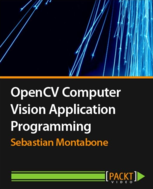Intel has recently released the new OpenVINO 2023.0 with major new features such as macOS ARM64 support, support for Python 3.11, the ability to directly run models without converting them, and many more performance gains and new features. I’ll show you here how to compile it for Ubuntu 22.04.2 LTS.
First we need to make sure we have the latest updates installed in the OS:
sudo apt-get update
sudo apt-get upgrade
Now we need to install some build tools in case you don’t have them installed:
sudo apt-get install build-essential git cmake
Now we get the OpenVINO 2023.0 source code:
cd ~
git clone --recursive --branch releases/2023/0 https://github.com/openvinotoolkit/openvino.git openvino-2023.0
cd openvino-2023.0
git submodule update --init --recursive
There are some OpenVINO dependencies that need to be installed first. These require you to have access to sudo in order to install them using the provided script, like this:
sudo ./install_build_dependencies.sh
After that’s finished we are ready to install some python requirements, configure OpenVINO, and build it with OpenCV support:
pip install -r src/bindings/python/src/compatibility/openvino/requirements-dev.txt
mkdir build
cd build
cmake -DENABLE_PYTHON=ON -DENABLE_OPENCV=ON -DCMAKE_INSTALL_PREFIX=install ..
make -j`nproc`
make install
OpenVINO 2023.0 is now installed. You can test that it’s working properly by running this:
cd ~/openvino-2023.0/bin/intel64
./hello_query_device
You should see at least a CPU device in there.
[ INFO ] Build ................................. 2023.0.0-11004-caae459f547-releases/2023/0 [ INFO ] [ INFO ] Available devices: [ INFO ] CPU [ INFO ] SUPPORTED_PROPERTIES: etc...
Now we will install the OpenVINO development tools, such as the model optimizer, with this:
pip install openvino-dev==2023.0.0
These scripts are now installed at ~/.local/bin which is not in the path, so we need to add it there:
export PATH=$PATH:~/.local/bin
This will only work for the current terminal. If you want to make this change permanent, just add that previous line to the end of the ~/.bashrc file.
Now we can use the tools. You can for example list all the available models for download like this:
omz_downloader --print_all
OK, now let’s download a model, convert it to the OpenVINO Intermediate Representation format (IR), and run an inference on it. We are going to classify this image (you can use any image you want):

cd ~/openvino-2023.0/bin/intel64
omz_downloader --name alexnet
omz_converter --name alexnet
./classification_sample_async -m public/alexnet/FP32/alexnet.xml -i image.jpg
The result we get is the top 10 classes that it thinks the image represents:
Top 10 results:
Image image.jpg
classid probability
------- -----------
207 0.8424635
208 0.1065520
222 0.0185891
219 0.0128466
257 0.0080099
216 0.0044186
175 0.0013159
212 0.0008337
244 0.0008299
194 0.0007491
This means that the object with class ID 207 has a probability of 84.2% to be there in the photo. Let’s see what object that is. These IDs are based on the Imagenet 1000 class list, that you can see here for example. We’re going to grab a txt version of this list and grep it to see the contents:
wget https://gist.githubusercontent.com/yrevar/942d3a0ac09ec9e5eb3a/raw/238f720ff059c1f82f368259d1ca4ffa5dd8f9f5/imagenet1000_clsidx_to_labels.txt
cat imagenet1000_clsidx_to_labels.txt | grep 207
And the answer is:
207: 'golden retriever',
So there you go, OpenVINO is installed, and it successfully classified the image as being a golden retriever.





One Response
Stay in touch with the conversation, subscribe to the RSS feed for comments on this post.
Continuing the Discussion